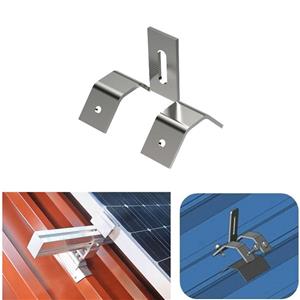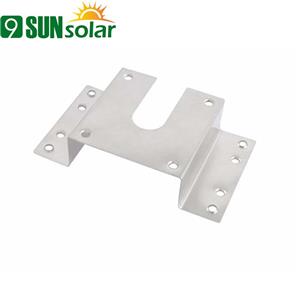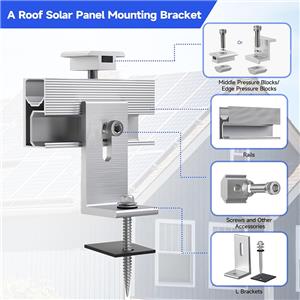-
08-01-2025
9Sun Solar Return to World Future Energy Summit 2025
We, 9Sun Solar, a leading manufacturer of solar pv mounting system in Fujian province, are excited to announce we return to the World Future Energy Summit 2025. Taking place at the Abu Dhabi National Exhibition Centre (ADNEC) from January 14-16, 2025, this prestigious event brings together the world’s leading energy industry experts, policymakers, and technology innovators.
-
03-01-2025
9SUN SOLAR Announces 2025 Global Exhibition Lineup to Showcase Innovative Solar PV Mounting Solutions
9SUN SOLAR will showcase its advanced solar PV mounting systems at major international exhibitions in 2025, highlighting innovations in ground, rooftop, and agricultural solutions for efficient, sustainable energy.
-
31-12-2024
Maximize Your Solar Investment with Expert Ground Solar Installations
At 9Sunsolar, we offer tailored ground solar systems with over 6 years of expertise. Choose from concrete, ground screws, ballasted, or tracker foundations for optimal performance and easy maintenance.
-
13-12-2024
How Solar Panels Are Installed on Metal Roofs
Metal roofs are an excellent choice for solar panels due to their longevity, often lasting up to 70 years compared to the 15-20 years of asphalt shingles. This durability means you can replace your solar panels later without needing to re-install mounting systems.
-
08-11-2024
Standing Seam Clamp: The Perfect Solar Roof Mounting Solution for Austria
The 9Sunsolar Standing Seam Clamp offers an ideal solution for solar roof installations in Austria. It provides a secure, non-invasive way to attach solar panels to standing seam roofs, preserving the roof’s integrity. With a versatile and adjustable design, it’s compatible with various roof types and built to withstand harsh weather conditions. This reliable, weather-resistant system ensures optimal solar performance while maintaining the roof's aesthetics. For more information, visit [www.9sunsolar.net]
-
07-11-2024
How to Install Solar Panels on a Flat Roof
Installing solar panels on a flat roof can be a highly effective and efficient way to generate renewable energy, offering flexibility in both panel placement and system design. By choosing the right mounting system and optimizing the angle of your panels, you can maximize energy production while minimizing maintenance and installation costs. Despite some potential challenges, flat roof solar installations remain an attractive option for many homeowners and businesses looking to harness solar energy.
-
05-11-2024
Types of Ground-Based Solar Mounting Foundations
Governments worldwide are promoting solar energy through various policies. Solar power systems are generally classified into centralized (large-scale PV plants) and distributed (rooftop PV) systems. The article covers three types of ground-based solar mounting foundations: 1. **Independent and Strip Concrete Foundations** - **Advantages**: Easy to construct, adaptable to different soils, and shallow depth. - **Disadvantages**: High labor and material costs, long construction times, and environmental impact. 2. **Spiral Pile Foundation Support (Ground Screw Piles)** - **Advantages**: Quick to install and causes minimal environmental disruption. 3. **Impact Pile Foundation Support** - **Advantages**: No excavation needed, quick installation, and adaptable to various climates. - **Disadvantages**: Difficult to install in hard or rocky soils and may corrode in saline areas. Each foundation type has unique benefits and limitations, making them suitable for different solar projects based on location and conditions.
-
01-11-2024
How Does Heavy Snow Affect Solar Mounting Systems?
Heavy snowfall can significantly impact solar mounting systems in several ways: 1."Light Obstruction": Accumulated snow can block sunlight, reducing the efficiency and power generation of solar panels. 2. "Increased Load": The weight of snow adds stress to the mounting structure, which may lead to damage or collapse if not properly designed. 3. "Water Accumulation": Snow buildup can compromise stability and, when melted, create puddles that may damage components if not managed correctly. To mitigate these effects, it’s important to regularly clean solar panels, ensure robust mounting systems, consider snow management solutions, and assess local climate conditions during installation. While challenges exist, they are generally manageable with proper planning and professional guidance.




